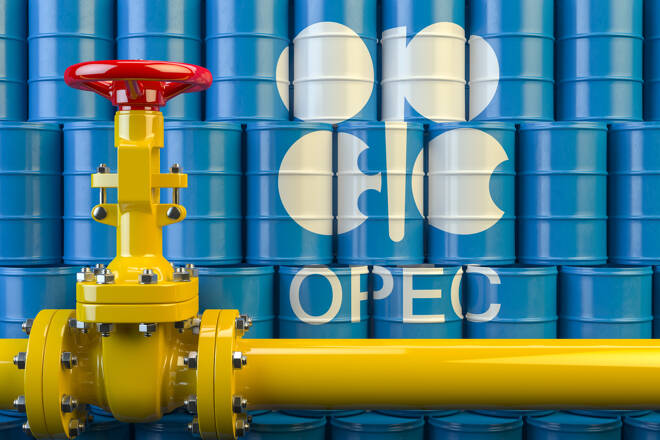Advertisement
Advertisement
OPEC Supply Cut Fuels Inflation Concerns. What Does That Mean For Commodity Prices?
By:
Oil prices skyrocketed within literally “seconds” of the Monday open, after OPEC+ announced they would cut production by more than 1 million barrels per day in July.
Commodities are starting to attract a lot of attention on a scale not seen since the Global Financial Crisis in 2008 as traders rush to capitalize on the biggest macro themes driving the markets from stubbornly high inflation, a brewing U.S debt crisis to rapidly rising recession risk.
Macroeconomic Situation Fuels the “Perfect Storm” for Commodities
Regardless of whatever situation unfolds from here on in 2023, there is no denying that the current macroeconomic backdrop is fueling a “perfect storm” for Commodities.
We are almost halfway through 2023 and it has already been a massive year for Commodities – but this could just be the beginning of the markets’ biggest year since 2008.
Minutes from the Federal Reserve’s May Monetary Policy Meeting confirmed that several top Fed officials backed the need to continue raising interest higher as ‘insurance’ against inflation.
Those odds surged on Friday, after Non-Farm Payrolls data showed, the U.S. economy continued to defy expectations by adding 339,000 new jobs in May – more than twice the expectations – signalling that Fed’s ongoing efforts to cool the economy and lower inflation has barely made a dent.
However, there’s a problem! Current economic and financial market conditions can’t handle anymore rate hikes.
After 10 consecutive hikes – the Federal Reserve has increased interest rates to 5.25% – the highest level since 2007 – and well into restrictive territory.
The further we go into restrictive territory, the more likely it becomes that we begin to see black swan events – just like we have seen recently with the second, third and fourth largest bank failures in history, which have all occurred in past two months.
Those hikes have also pushed mortgage rates up by more than double. Credit card debt has surpassed $1 trillion for the first time ever. Bankruptcy filings are at their highest level since 2008. While overly inflated assets such as real-estate and equities are beginning to wobble.
Most economists have long felt that the Fed has gone one rate hike too far. Now with odds increasing of another rate hike coming this month – the biggest risk is that the Fed may overdo it.
On the inflation front, there is growing evidence of price pressures re-accelerating. One of the signs is Crude Oil prices.
OPEC+ Announced Another Cut
Oil prices skyrocketed within literally “seconds” of the Monday open, after OPEC+ announced they would cut production by more than 1 million barrels per day in July – a move, which has thrown gasoline on the inflationary fire and presented the Federal Reserve with a new headache it would have preferred to do without.
As traders know – there is a strong correlation between inflation and Commodity Prices. When inflation accelerates at a red-hot pace, so does the prices of Commodities.
According to leading economists, OPEC’s move will “most likely” increase inflation and derail central banks’ efforts to bring down inflationary pressures. Some economists even raised their forecasts – signalling that the production cut will lead to Oil prices pushing back above $100 a barrel.
When you consider the full magnitude of events that are currently unfolding, it comes as no surprise to see why Commodities are everyone’s favourite trade once again!
Commodity Price Forecast of the Week
Where are prices heading next? Watch The Commodity Report now, for my latest price forecasts and predictions:
About the Author
Phil Carrcontributor
Phil Carr is co-founder and the Head of Trading at The Gold & Silver Club, an international Commodities Trading, Research and Data-Intelligence firm.
Advertisement
